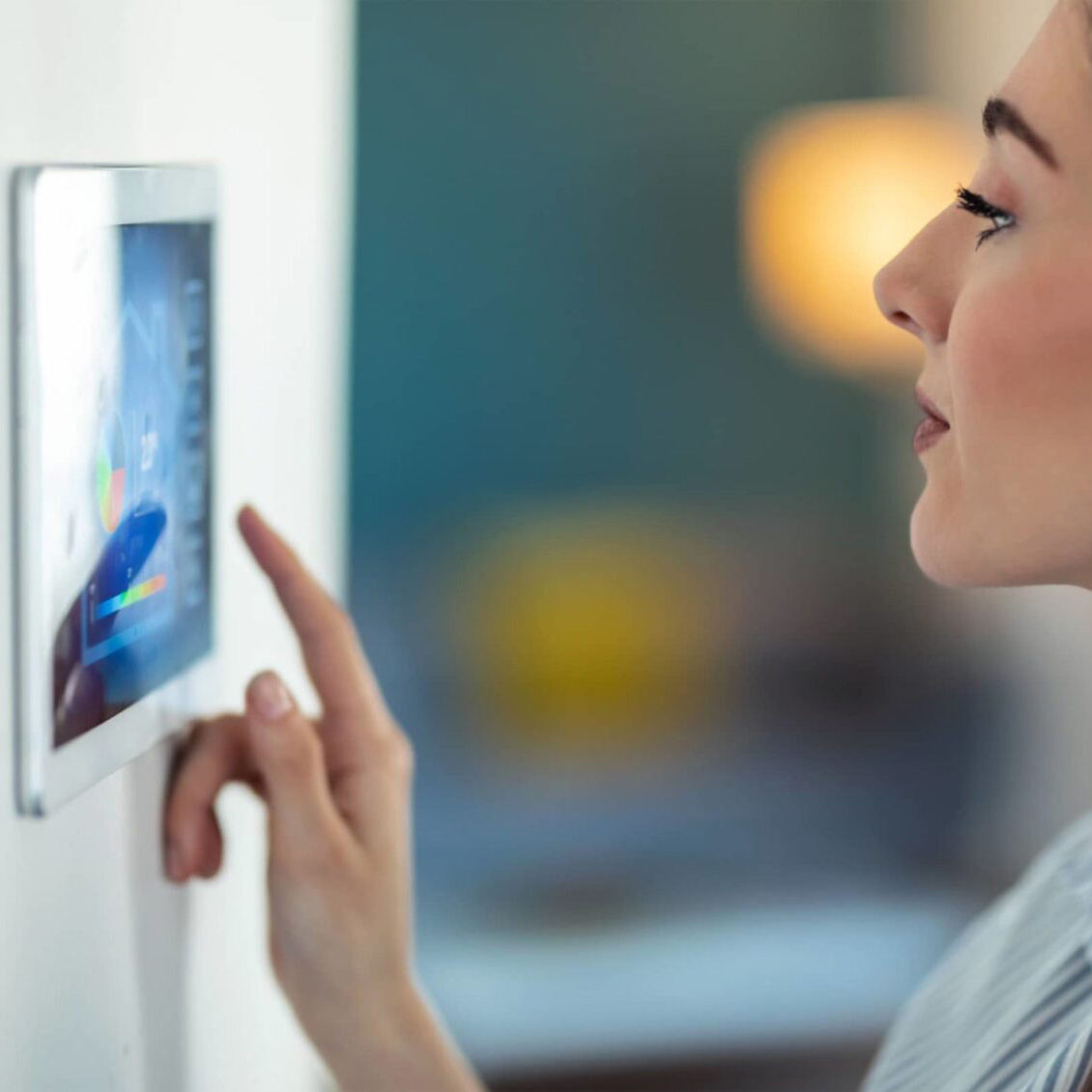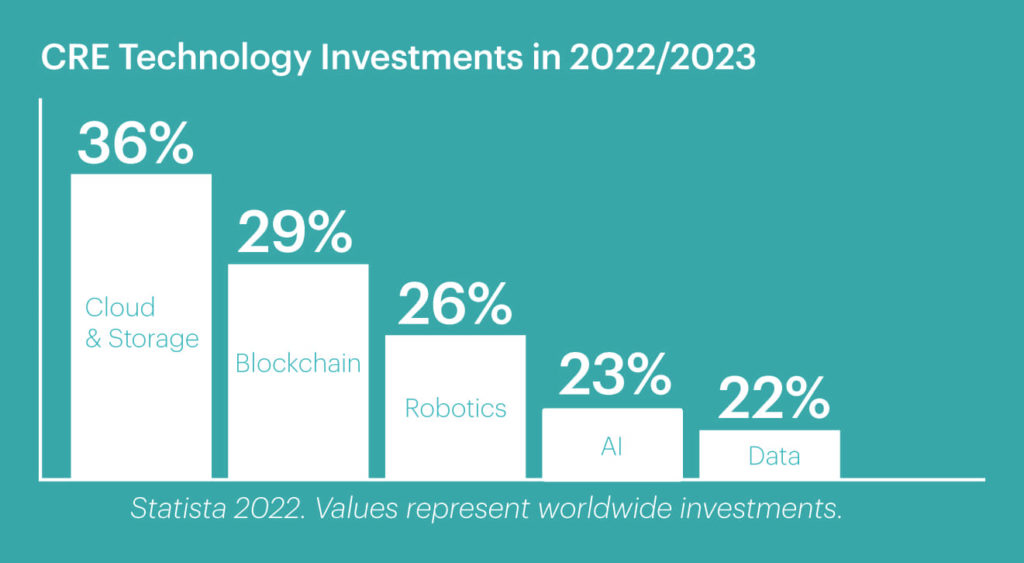“Intelligent in this case means that each building’s services will be orchestrated by a computer system and linked by a fiber-optic network — a trademarked system called a ‘Data Highway’ — running through its core. Functions such as heating, ventilation, lighting, transportation, security, fire protection and most important, telecommunications and electronic office services will be integrated, providing economies in construction and management. Still, it is too early to say this constitutes a trend. …They are still in the testing stage.”
So here we are, 40 years after the introduction of the internet, and smart buildings have become mainstream. In fact, it’s become an $80.62 billion industry that’s projected to reach a global value of $328.62 billion by 2029 according to Fortune Business Insights.
What used to be cutting-edge innovation, however, is now common practice, considering that practically every building across America today is equipped with some element of smart tech.
Property technology (proptech) is the primary driver behind smart buildings and often overlaps with financial and smart technology as well as with shared economy real estate.
It’s essentially all the tech tools commercial real estate (CRE) employs to optimize the way people buy, sell, research, utilize, market and manage a property. The general purpose of proptech is to improve the tenant experience and help stakeholders, like the owners-operators, tenants and brokers, make informed investment and property-related decisions.
Here is some of the most popular proptech in use by CRE stakeholders today.
Owners-Operators
Technology-like sensors can collect and aggregate valuable data about a building’s systems, tenant behavior and the local market to provide a holistic representation of an asset’s overall performance. This can help owners-operators determine how to best put their budgets to work, including facility improvements, environmental, social and governance (ESG) efforts, and identifying new revenue opportunities.
Artificial intelligence (AI) technology is heavily used in maintenance-monitoring systems to automatically alert system needs, reduce process redundancies, improve response times and cut expenses. Self-diagnosis and self-correcting smart applications are of special interest to managers as they save time and money while minimally impacting tenants.
Owners-operators can also benefit from tax rebates and other government incentives associated with sustainable proptech.
Tenants
Post-COVID-19, tenants are returning to the office with an appetite for innovation — especially for “touchless” technologies (e.g., sensor faucets, keyless entry) and augmented HVAC and ventilation systems as well as utility automation that promotes energy conservation (e.g., motion-detection lighting and heating).
Tenant and landlord smartphone apps are also a welcome enhancement to the office experience, offering customer-centric convenience while creating a competitive advantage within the CRE industry.
“This multitasking technology decreases stress and increases workflow,” said Marc DeLuca, CEO and Regional President, Eastern U.S. of KBS, in Forbes. “Instead of having to get your car washed and detailed after a long workday, you can now order a car wash to detail it for you on-site during the day. If you’re having a larger team conference and need to order lunch, it can all be done through the app. Streamlining small processes like these adds up to increased satisfaction.”
One such smartphone app is Simpli, which has been in use at various KBS properties throughout District of Columbia metro locations, including 3001/3003 Washington, One Washingtonian, Reston Square, Dulles Station East and Redwood Plaza. The Simpli app provides its users with greater overall connectivity to their workplace community.
Brokers
The broker community also leverages AI to procure property intelligence, such as demographic trends, property records and permits, building and tenant information, valuation, management reports and historical maintenance. This information is then used in their sales, marketing and acquisition due diligence.
Virtual reality (virtual tours) is also considered a must-have because it reaches a much broader audience of potential investors or tenants. Most platforms provide the opportunity to tour a space from various viewpoints, navigate surroundings, arrange furniture, research specs and amenities and chat with a property representative.
What’s Next?
While physical proptech remains important, digital and intuitive technologies are quickly becoming the next big thing in designing future-focused smart buildings.
There’s a greater shift toward technologies aimed at business continuity. According to Statista, 2021 saw more than $24 billion in proptech investments, the highest value on record, with AI, virtual reality, augmented reality and the Internet of Things (IoT) leading the charge. More specifically, Statista points to cloud computing and storage as the most popular technology CRE firms planned on investing in for 2022 and 2023, followed by blockchain and robotic process automation.
These are specific future-focused, process-driven technologies that can maintain essential functions during a crisis such as a cyberattack, natural disaster or another health emergency. These technologies can also help CRE better understand — or even predict — property, market and economic behavior to better articulate response practices in the face of disruption.
Smart technology has the potential to transform CRE. Stakeholders, however, need to be vigilant; anything that exists on the internet is vulnerable to security threats and privacy breaches. A sophisticated cybersecurity strategy is essential as smart buildings become more prominent — and at this stage, there lacks a true “industry standard” to help CRE safely navigate risk. Compliance needs to evolve and tighten its fists.
Like information traveling along the “Data Highway,” technological advancements in smart buildings have increased exponentially. Buildings are smarter today than yesterday. But not as much as they’ll be tomorrow.
Learn more by visiting KBS.com/Insights.





